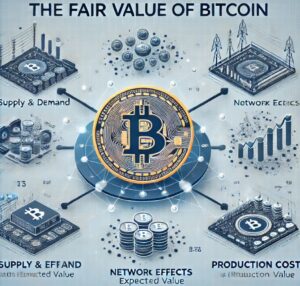5 greatest achievements of AI lab DeepMind
5 min readTable of Contents
Few artificial intelligence (AI) labs have made as many groundbreaking discoveries as UK-based startup DeepMind. Founded in 2010 by Demis Hassabis, Shane Legg and Mustafa Suleyman, the lab has been at the forefront of AI development in the fields of deep learning, unsupervised learning, reinforcement learning and neuroscience.
After being acquired by Google for $500 million in 2014, the company also played a major role in the development of services like Google Search, YouTube, and Gmail. In 2023, DeepMind merged with Google Research and founded Google Deepmind.
Though it wasn’t until 2021 before DeepMind turned a profit for the first time, for years the company played a pivotal role in developing high-profile projects like AlphaFold, AlphaGo, and WaveNet, as well as discovering new ways to improve human decision-making with AI.
DeepMind’s top 5 AI breakthroughs
Since its inception over a decade ago, DeepMind has contributed to a significant number of innovations in AI research. Some of the most important are listed below.
1. AlphaFold
One of DeepMind’s biggest breakthroughs in the past decade was an AI program called AlphaFold, which launched on July 22, 2021. AlphaFold uses AI to process the amino acid sequence of proteins and predict the shape of proteins by creating a 3D model.
Before the release of AlphaFold, scientists only knew the 3D structures of 17% of the proteins in the body. With the launch of AlphaFold, scientists now have access to over 200 million protein predictions and 98.5% of 3D structures for human proteins can be predicted.
AlphaFold has essentially contributed to a better understanding of the structure of human proteins, which until now have been considered one of the biggest problems in biology had remained opaque. Before AlphaFold, scientists had to experiment on their own to discover the underlying structure of a protein.
Today, more than 1.2 million researchers in 190 countries use the AlphaFold protein structure database and have used this solution to develop a malaria vaccine and discover new treatments for liver cancer.
By using AI to automate protein mapping, DeepMind has not only helped scientists view protein structures, but has actively contributed to accelerating biological research and future drug discovery.
2. AlphaGo
Another research project that has attracted a lot of international interest is AlphaGo. AlphaGo is an AI-driven program that uses machine learning and deep neural networks to play the board game Go. AlphaGo analyzes past games and board configurations to predict the next move in the game of Go.
Unlike other AI Go programs that use search trees to test all possible moves and positions, AlphaGo received a description of the Go board as input and was then trained to play against itself thousands of times to hone its decision-making ability improve.
This approach was so successful that in October 2015 the program not only den defeat three-time European Go champion Fan Hui could, but in March 2016 also the 18-time Go World Champion Lee Sedol. AlphaGo also achieved a 9-dan professional rank, the game’s highest certification.
AlphaGo has demonstrated how AI can be used to analyze a complex decision-making process, learn common patterns, and predict the most effective response or outcome.
3. WaveNet
WaveNet, released in 2016, is another core development of DeepMind. It is a generative model for raw audio, trained on a large set of speech samples, capable of generating natural-sounding speech based on text or audio input.
Instead of cutting and recompiling voice recordings like other text-to-speech systems, WaveNet instead uses a convolutional neural network trained on images, videos and sounds to learn and emulate the structure of human speech.
That means it can compose waveforms from scratch and generate speech that mimics the sound of a human voice. Today WaveNext is used in a number of popular applications including Google Assistant, Google Search and Google Translate.
DeepMind’s key achievement with WaveNext was that the company was able to create a solution that made computer-generated speech sound more natural and less robotic than traditional text-to-speech solutions.
4. Google Bard
In the Generative AI era, one of Deepmind’s most significant contributions was working on the chatbot Google Bard, which was released in March 2023 in collaboration with Google AI.
Bard is based on the Pathways Language Model 2 (PaLM), a language model trained on publicly available data, including web pages, source code, and other data, and enables users to process natural language queries and natural language responses.
Bard’s release came just months after OpenAI established itself as an industry leader in the Large Language Model (LLM) space with the release of ChatGPT in November 2022, and was critical to staying competitive in the AI arms race.
As of this writing, the key differentiator between Bard and ChatGPT is that Bard can crawl the web on demand and generate responses, while ChatGPT relies on pre-2021 training data.
It’s worth noting that Bard got off to a rough start, with Google losing $100 billion in market value after it falsely claimed that the James Webb Space Telescope captured the first images of an extra-solar system planet during a demo had. Since then, however, it has become a major competitor to OpenAI, reaching 142.6 million visitors in May.
5.RT-2
Just months after collaborating with Google AI to release Bard, in July 2023, DeepMind released RT-2, the first Vision Language Action (VLA) robotic Transformer model. RT-2 processes text and images from the Internet and uses them to output robot actions.
RT-2 can be used to control robotic devices and teach robots basic tasks such as B. Recognizing and throwing away garbage. It is also able to respond to user commands with conclusions in the form of object categories or high-level descriptions.
It is also capable of making semantic inferences such as B. recognizing whether an object can be used as an improvised hammer (e.g. a rock) and what type of drink is best for a tired person (an energy drink).
As a VLA model, RT-2 is innovative in that it allows users a new way of interacting with robots by teaching them how to perform specific tasks and perform specific actions. This opens up a whole range of new possible applications for AI in robotics.
The bottom line
DeepMind has enjoyed a reputation as one of the best AI labs in the world for years. With a track record of delivering high-profile projects like AlphaFold, AlphaGo, WaveNet, Google Bard, and RT-2, DeepMind will continue to play an important role in AI research for years to come.
If there’s anything to learn from DeepMind research, it’s that AI can be used to solve almost any problem imaginable, no matter how complex the scenario or requirement.






